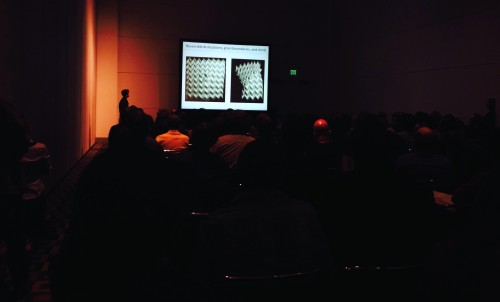Tag archives: 2DM
Women in graphene
By James Dacey in Manchester
 Today is the third day of Graphene Week, a conference at the University of Manchester devoted to the fundamental science and applications of 2D materials. While many of the talks require a PhD in materials science to even understand the title (I for one am struggling), one session taking place this evening has the refreshingly simple title: Women in Graphene. Intrigued, I caught up with the session organizer Katarina Boustedt from Chalmers University of Technology in Sweden.
Today is the third day of Graphene Week, a conference at the University of Manchester devoted to the fundamental science and applications of 2D materials. While many of the talks require a PhD in materials science to even understand the title (I for one am struggling), one session taking place this evening has the refreshingly simple title: Women in Graphene. Intrigued, I caught up with the session organizer Katarina Boustedt from Chalmers University of Technology in Sweden.
Graphene Week is an annual event organized by the Graphene Flagship, the EU’s biggest ever research initiative with a budget of €1 billion. As promoting equality is a key part of the Flagship’s mission, Boustedt has launched this initiative to support women working in 2D materials research. Tonight’s two-hour session is designed to start the conversation and find out the types of support that women researchers would like.
View all posts by this author | View this author's profile
Embracing the materials world
By James Dacey
Materials research is enjoying a new golden age. The hit parade of supermaterials that has been discovered in the relatively recent past is extensive. It includes the likes of high-temperature superconductors, quantum dots, bucky-balls, nanotubes, aerogels, silver nanowires and graphene. Meanwhile, new approaches to the commercialization of materials – such as the recent Materials Genome Initiative in the US – are improving the processes by which new materials are transferred from the science lab to practical applications in the real world.
In conjuction with these new discoveries, materials scientists have also made dramatic improvements to the tools they have available for studying and manufacturing materials. Here, the list of advances is seemingly endless. Researchers can now simulate, image and analyse materials with far more accuracy than ever before. Developments in production methods – such as the advent of 3D printing – are also enabling researchers to scale up their new materials with greater ease.
View all posts by this author | View this author's profile
